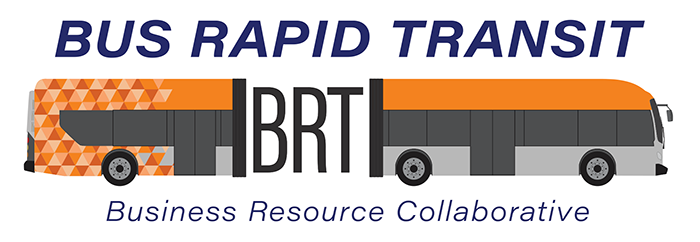Bus Rapid Transit
In November of 2016, Wake County voters approved a plan for focused investment in public transit which puts the implementation of the Wake County Transit Plan in motion. The plan calls for building approximately 20 miles of transit lanes along four (4) Bus Rapid Transit corridors within Wake County (Wake BRT).
What is BRT?
Bus Rapid Transit (BRT) definition from Federal Transit Administration:
BRT is a high-capacity bus-based transit system that delivers fast and efficient service that may include dedicated lanes, busways, traffic signal priority, off-board fare collection, elevated platforms and enhanced stations.
Video Highlight – City Council Tours the New Bern Avenue Corridor:
On Tuesday April 9, City Council took their work session on the road to tour the New Bern Avenue corridor via a GoRaleigh bus. They made several stops along the way to meet with staff and discuss the possibilities for the Transit Overlay District, sometimes referred to as “TOD.” The tour helped Council members better understand the 744 properties along this route and proposed changes in the rezoning for this corridor.
The video below will take you along the tour with City Council and explain how this supports growth and density around the places that buses run. The goal is to make it easier for people to walk to bus stations and local amenities.
Benefits of BRT –
BRT has several distinguishing features which are described below.
Dedicated Bus Lanes
BRT buses have their own lane in traffic. Dedicated lanes prevent traffic delays, even during rush hour. Keeping BRT buses separate from general traffic also reduces the risk of collisions, increasing the safety for all vehicles.
Traffic Signal Priority at Intersections
BRT buses can coordinate with traffic signals along their route, receiving a longer green light if running late. This increases efficiency and allows the buses to stay on schedule.
Frequent On-Time Service
With dedicated lanes and less frequent stops, BRT buses can stick closely to their schedules. BRT buses also will have GPS tracking, so stations can display live, accurate updates for bus arrival time. The goal is to have BRT buses running approximately 15 minutes all day.
Off-Board Fare Collection
Passengers will pay the fare at the station, instead of on the bus. This will eliminate wait times and the potential for confusion when boarding the bus. The BRT fare will be the same as all GoRaleigh fares.
Enhanced Stations
BRT corridors will have specialized stations that provide more services for riders. These services include improvements to ticketing, scheduling, and boarding. The stations will also have raised platforms for easy boarding. This will eliminate any gap between the station and the bus, making BRT more accessible to users.
Specialized Vehicles
The BRT system will have its own custom buses. These larger buses will be able to accommodate more passengers than conventional bus services. The buses will also have doors on both sides and lower floors, for easier loading and unloading.
Unique Branding
The BRT system will have its own unique branding and designs. This will make the buses and stations more visible, and help people distinguish between the BRT and other transit services.
Why do we need BRT?
The addition of Bus Rapid Transit to Raleigh’s existing network of public transportation will allow the system to better meet transit demands, take more cars off the road, and get riders where they need to go faster. Raleigh already has a successful network of traditional bus routes serving the downtown and surrounding areas. Because BRT is a bus-based rapid transit solution, it can seamlessly supplement the existing system by expanding the reach and capacity of bus service along strategic corridors. Other cities who have implemented BRT have seen successful integration it into a multimodal transit network.
